During the Battle of Jutland in 1916, Captain John Green stood on the bridge of HMS New Zealand wearing a piupiu and hei tiki. These two items became good luck charms, credited with seeing the ship safely through the First World War’s largest naval battle.
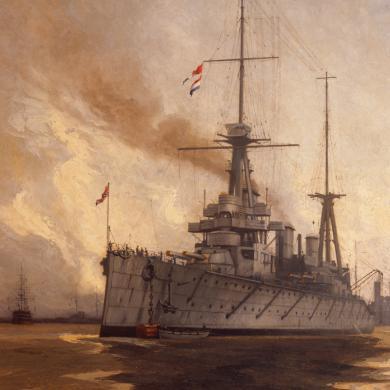
Detail of Gerald Maurice Burn's paiting 'HMS "New Zealand"', 1915. Courtesy of Archives New Zealand.
In 1913, one of the Royal Navy’s newest battlecruisers, HMS New Zealand, spent ten weeks touring the North and South Islands. The ship was a gift to Britain from the people of New Zealand, and visited 18 ports around the Dominion shortly after it was completed in Scotland. The public were invited on board the ship and 368,118 people visited from a total population of just over one million.
Among these tens of thousands of visitors were many Māori, including chiefs, elders and concert parties. Sources state that a “prominent Māori” took passage between some ports and instructed the crew in Māori culture and performance. A “haka party” was established on board and continued until the ship was decommissioned.
Unique gifts
Captain Lionel Halsey received many gifts on behalf of the HMS New Zealand. They included a silver tea service (from the Auckland Harbour Board); silver drums (from the Women’s Patriotic League) and a bulldog donated by a New Zealander living in London. The bulldog became the ship’s mascot and was known as Pelorus Jack. Even he received gifts during the tour – he was presented with two silver dog collars by New Zealanders of Transvaal.
During the tour, Captain Halsey was presented with a piupiu (waist or shoulder garment, sometimes called a kilt or skirt) and a pounamu (greenstone) hei tiki (pendant).
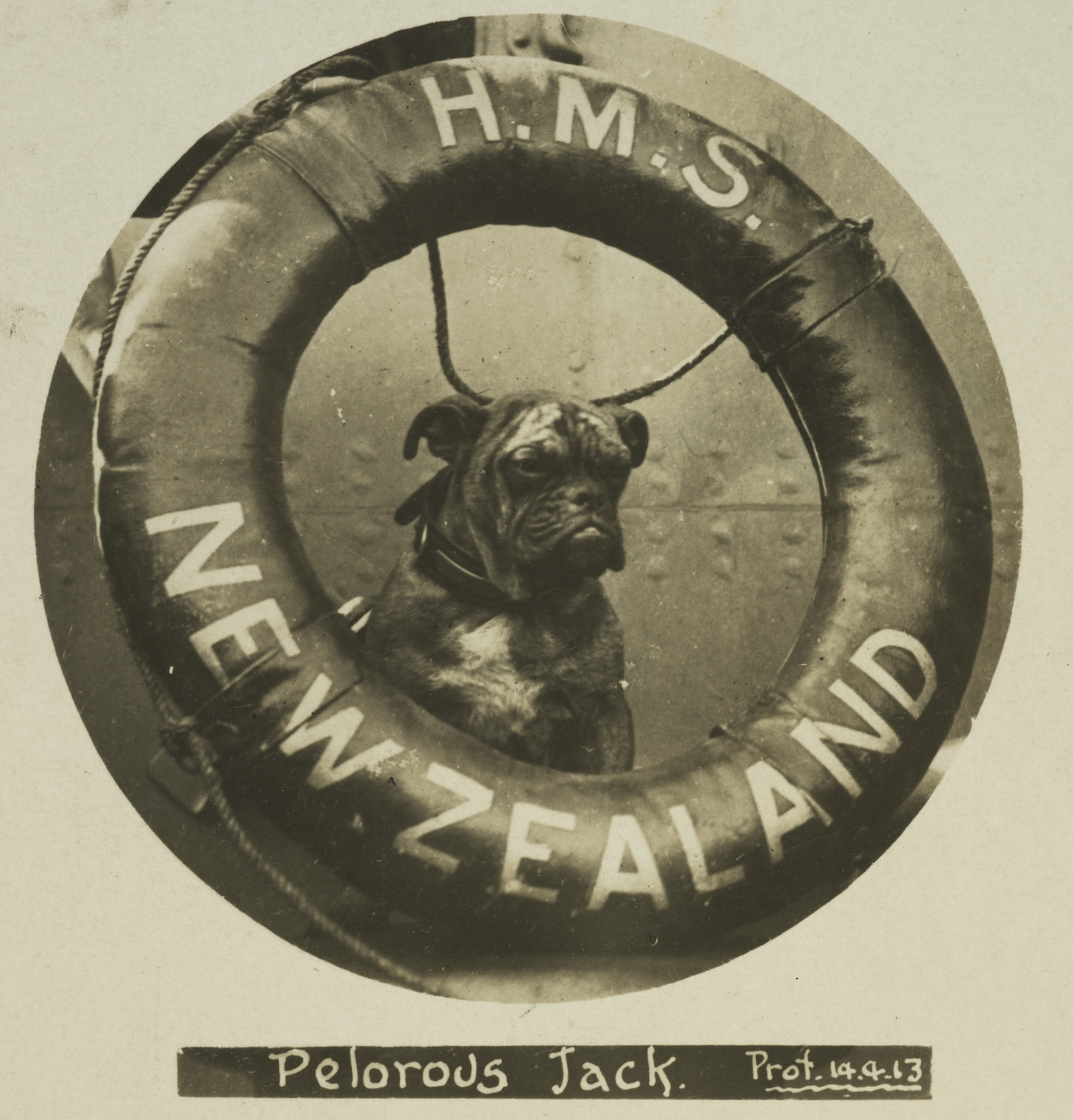
The bulldog Pelorus Jack, gifted by a New Zealander living in London, became HMS New Zealand’s mascot. Image from circa 1913, courtesy of Te Papa (PS.000507).
Piupiu
It is unclear exactly who presented the piupiu to Captain Halsey. Halsey himself did not record details about the “Māori chief” who gifted him the piupiu and who also prophesied about the future of the HMS New Zealand and its crew.
Legend has it that when the chief gifted the piupiu to Halsey, he told him to wear the piupiu during battle in order to protect the ship and its crew. If he did, then the ship would be involved in three sea battles; it would be hit only once; and that no one on board would be killed.
There are three possibilities for who the “Māori chief” might have been. Written evidence suggests that a piupiu was given to Halsey by Southern Māori MP, Taare Rakatauhake (Charles Rere) Parata on behalf of Ngai Tahu chief Mana Himiona Te Ataotu. Parata visited the ship on 19 April 1913 in Wellington. The second option is that the piupiu came from a Te Arawa chief. This account is supported by Halsey’s daughter’s diary, which mentions meeting Guide Rangi (Rangitiaria Dennan) in Rotorua and talking to her about how Halsey was made an honorary chief of the tribe and given a piupiu which he wore during battle. In this case, the chief would have been Mita Taupopoki. The third possibility is that the piupiu was gifted by Ngāti Tūwharetoa chief Te Heuheu Tukino V.
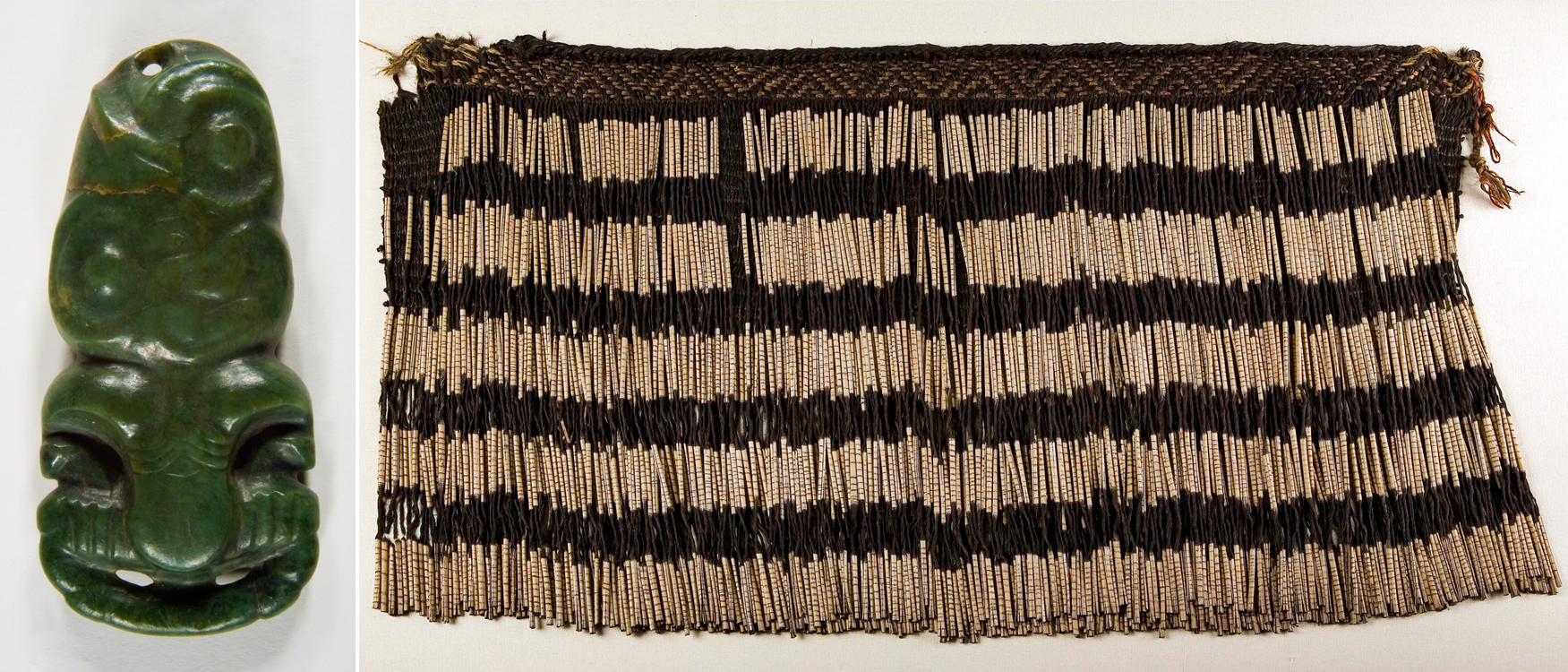
The pounamu (greenstone) hei tiki (pendant) and piupiu (waist or shoulder garment, sometimes called a kilt or skirt) which were likely worn by the captain of HMS New Zealand during the Battle of Jutland. Hei tiki image courtesy of Canterbury Museum: E132.16. Piupiu courtesy of the National Museum of the Royal New Zealand Navy.
Hei tiki
The second object which became a lucky charm for the crew of the HMS New Zealand is a hei tiki or pounamu (greenstone) neck pendant.
The hei tiki was gifted to the officers and crew of the HMS New Zealand by C. J. Sloman. Sloman was manager of the Crown Brewery in Christchurch and was actively involved in the Canterbury Acclimatisation Society.
Sloman deposited the hei tiki at Canterbury Museum in 1913 and then uplifted it a few months later in order to lend it to the HMS New Zealand. The loan came with a condition: the hei tiki had to be returned to Canterbury Museum should the name New Zealand ever be removed from the navy list. The condition was made very clear in a letter from Captain Halsey that was published in the Press on 2 February 1918.
Mr and Mrs Sloman attended an ‘At Home’ on the ship in Lyttelton (along with 1500 other invited guests) on 21 May 1913. There they had the opportunity to wander the ship, step inside the gun turrets and have tea. It is likely that this is where the gift was made.
There is no provenance as to where the hei tiki came from before it was deposited at Canterbury Museum. Sloman gifted other Māori material to Canterbury Museum, including a wooden mere, and he exhibited another tiki at the 1940 Centennial Exhibition, so may have had a collector’s interest in Māori taonga.
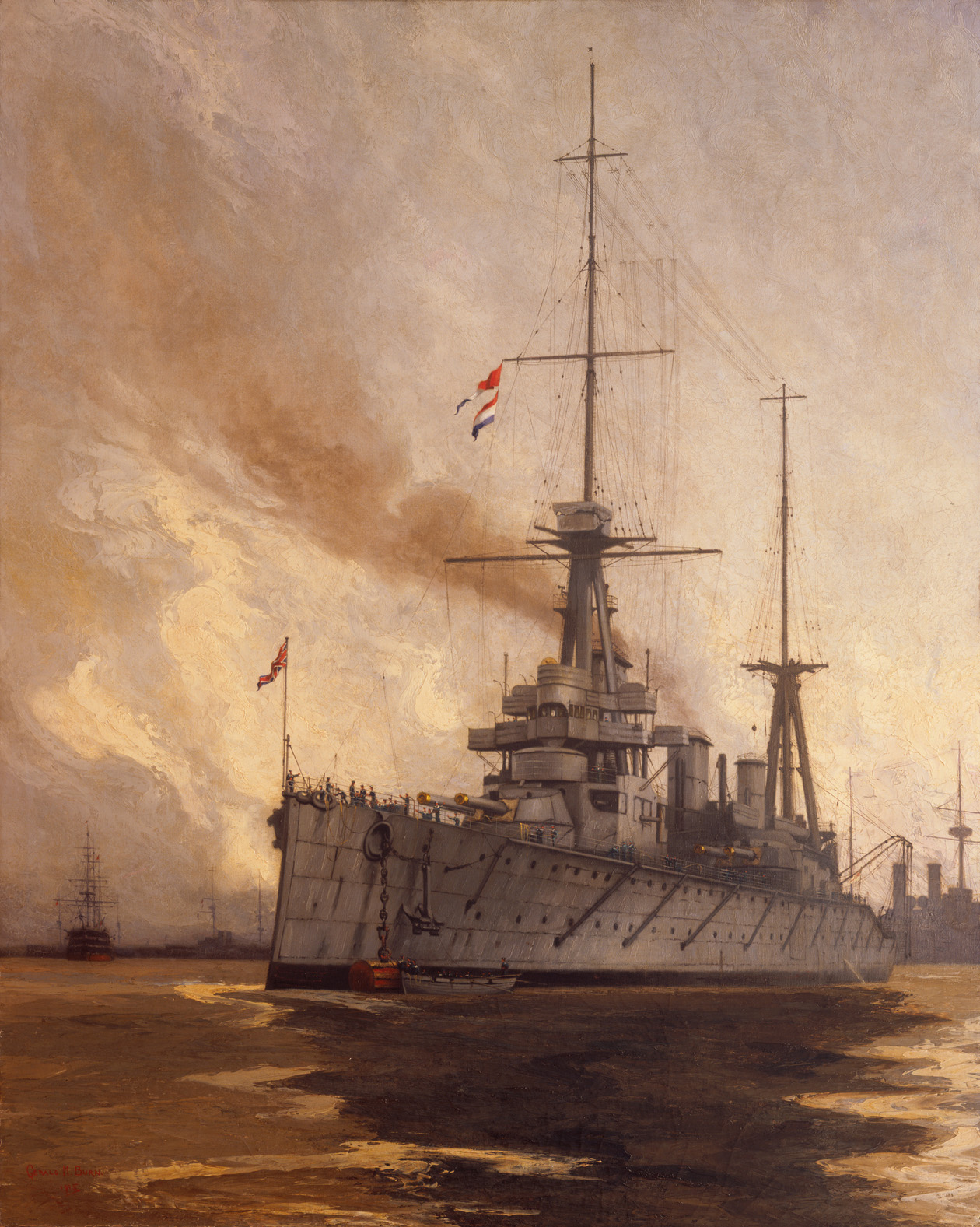
Gerald Maurice Burn's 1915 painting 'HMS "New Zealand"' was based on a sketch he completed during the ship's goodwill visit to New Zealand in 1913. Image courtesy of the National Collection of War Art, Archives New Zealand. Reference: AAAC 898 NCWA 539.
HMS New Zealand at war
The HMS New Zealand had completed its world tour and was back in British waters by the time the First World War began.
Captain Halsey was true to his word and ensured that the piupiu and hei tiki were worn during all three battles that the HMS New Zealand was involved in. Halsey wrote that he received odd looks from his bridge crew when he first wore them during the Battle of Heliograd Bight but after the ship came through this battle unscathed, members of the crew came to check that he was wearing them at their next engagement – Dogger Bank.
The piupiu and hei tiki were passed on to the next captain, John Green, who saw the ship through the Battle of Jutland. This was a major battle with heavy losses for both British and German forces. However, the HMS New Zealand again came through without major incident or injury. HMS New Zealand fired more shells than any other ship involved in the battle and yet suffered no casualties. The ship was hit once and some of the damaged armour plating was made into a dinner gong for the wardroom.
Despite its involvement in these three battles, the ship sustained heavy fire but was not seriously damaged. No one on board was killed. The prophesy seems to have been fulfilled.
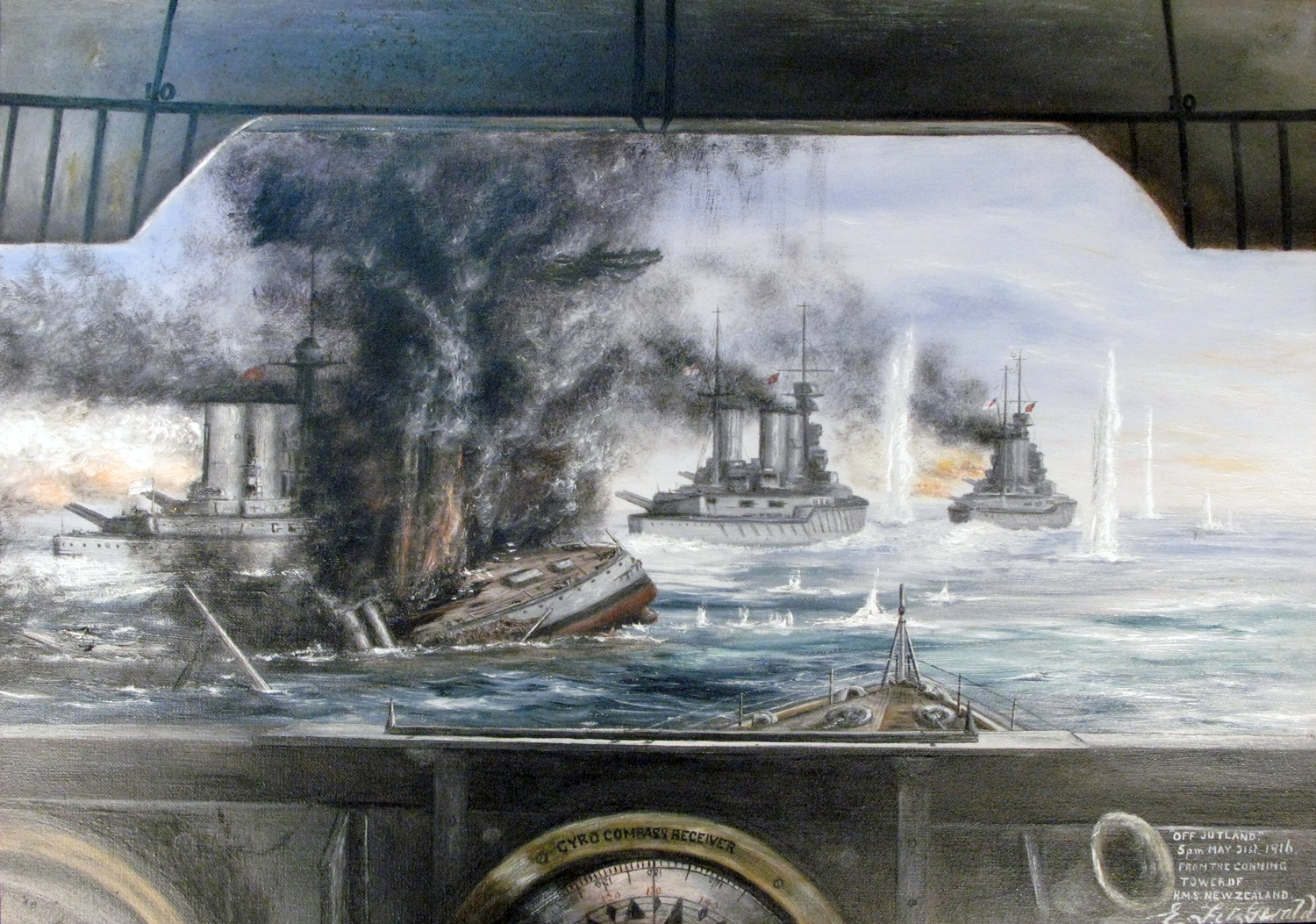
The Battle of Jutland from the bridge of HMS New Zealand, as depicted in a painting by Chief Petty Officer Eddie Fitzgerald. Collection of National Museum of the Royal New Zealand Navy.
After the war
HMS New Zealand survived the First World War, but not the post-war restrictions on the size of Europe’s navies. The ship was decommissioned and sold for scrap in 1923. However, New Zealand was still paying her off in 1944, near the end of the Second World War.
The ship’s trophies were distributed to various museums around the country. Its four inch guns sit outside the Auckland War Memorial Museum; the dinner gong made from a damaged armoured panel now resides at Te Papa, while other items are cared for by the Navy Museum in Devonport, Auckland.
The hei tiki returned to Canterbury Museum in 1932, as per the terms of Sloman’s gift. The piupiu remained with Captain Halsey until his death in 1949, although it did return to New Zealand to be displayed at the 1940 Centennial Exhibition. His daughter Ruth inherited the taonga and cared for it until her death in 2002. It was her wish that the piupiu return to New Zealand and in 2005 the piupiu was welcomed back by the New Zealand Navy at a powhiri held at Te Taua Moana Marae. Having travelled recently to the National Museum of the Royal Navy in Portsmouth, England, it will soon return to rest at the Navy Museum.